
Cirkit Designer
Your all-in-one circuit design IDE
Home /
Component Documentation
How to Use Soil Moisture Module: Examples, Pinouts, and Specs
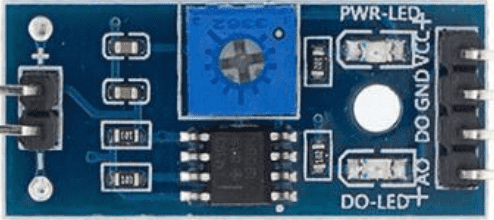
 Design with Soil Moisture Module in Cirkit Designer
Design with Soil Moisture Module in Cirkit DesignerIntroduction
The Soil Moisture Module is a sensor designed to measure the volumetric water content in soil. It provides an analog or digital signal that can be read by a microcontroller, such as an Arduino UNO, to monitor soil moisture levels. This module is commonly used in agricultural projects, automated irrigation systems, and environmental monitoring.
Explore Projects Built with Soil Moisture Module
Wi-Fi Enabled Soil Moisture Monitoring System with NodeMCU and Soil Moisture Sensor
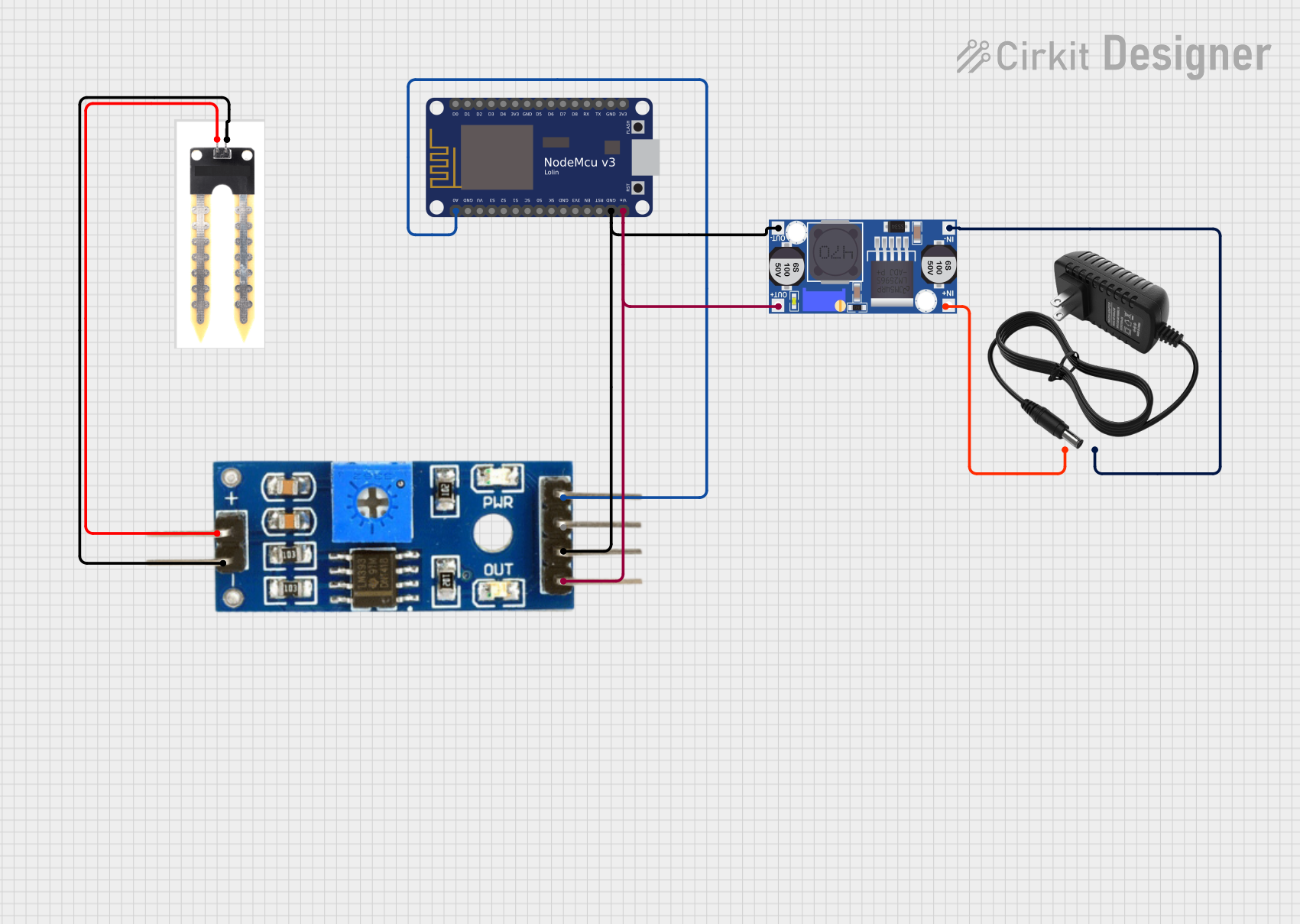
This circuit is a soil moisture monitoring system that uses a soil moisture sensor connected to a Soil Moisture Module, which in turn interfaces with a NodeMCU V3 ESP8266 microcontroller. The system is powered by a 12V power supply regulated through a buck converter, and it reads soil moisture levels, converting them to a percentage and transmitting the data via the microcontroller.
 Open Project in Cirkit Designer
Open Project in Cirkit DesignerArduino-Controlled Soil Moisture Sensing and Water Pump System
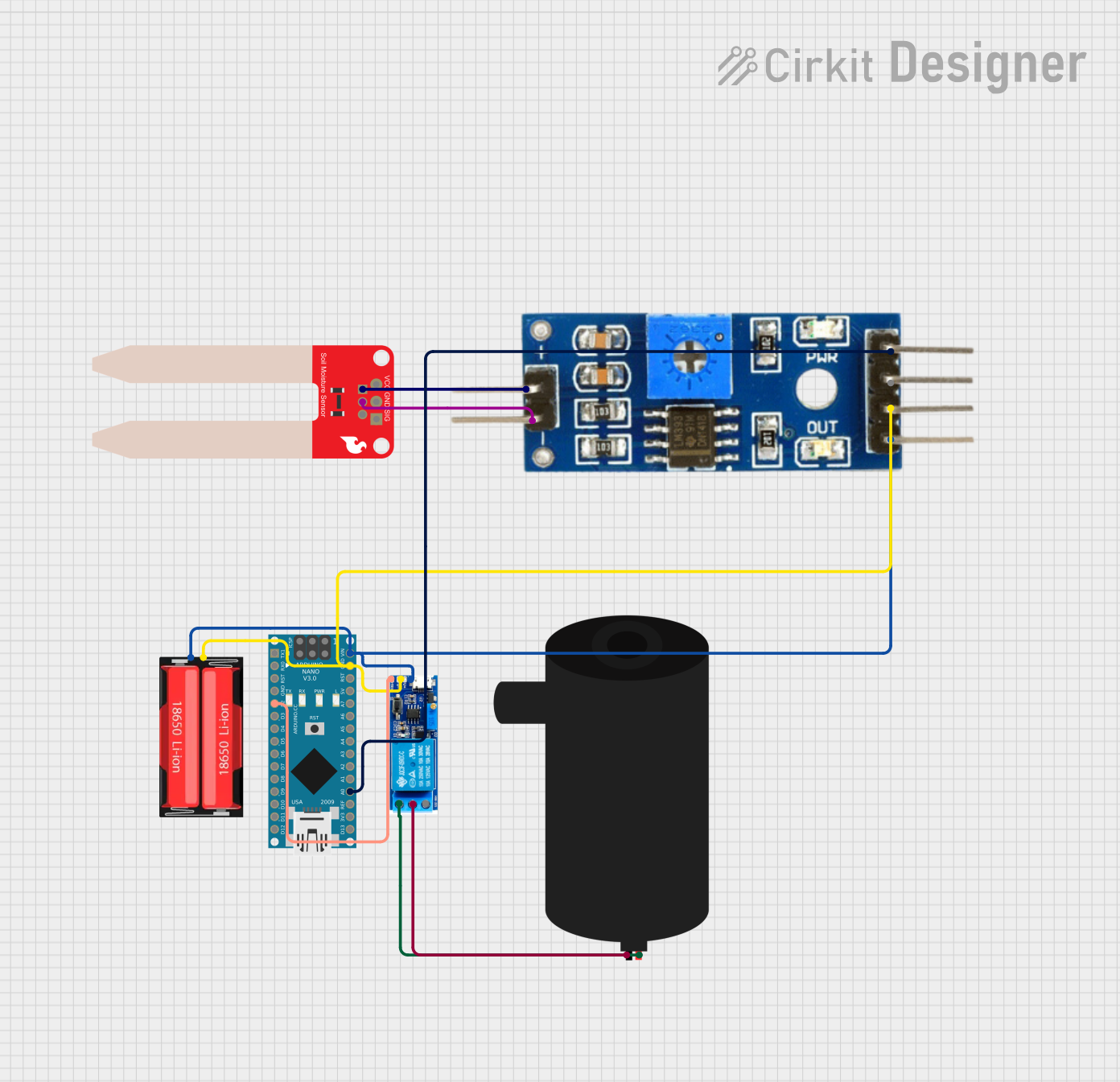
This circuit is designed to monitor soil moisture levels using a SparkFun Soil Moisture Sensor connected to a Soil Moisture Module, which interfaces with an Arduino Nano microcontroller. The Arduino reads the analog moisture level and can control a water pump via a relay module based on the moisture data. The system is powered by an 18650 Li-Ion battery, and the relay ensures that the pump is activated only when the soil moisture falls below a certain threshold, as determined by the Arduino's programmed logic.
 Open Project in Cirkit Designer
Open Project in Cirkit DesignerArduino UNO Controlled Soil Moisture Monitoring and Water Pump System
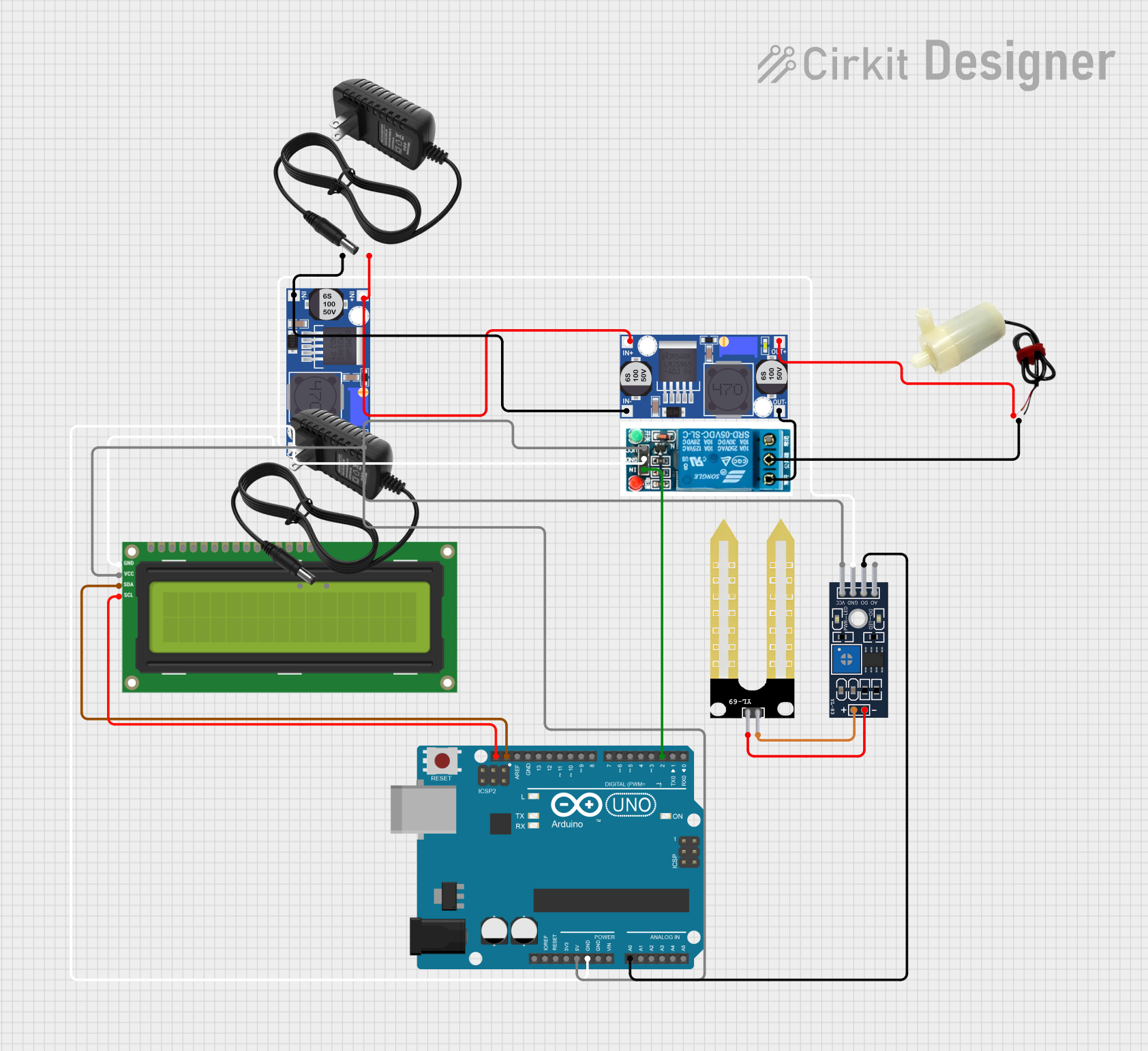
This is a soil moisture monitoring system with automated water pump control. It uses an Arduino UNO to read moisture levels via a YL-83 Module LM393 and a YL-69 Sonda sensor, controlling a 5V mini water pump through a 5V relay based on the sensor's output. The system's status is displayed on an I2C LCD 16x2 Screen, and power is regulated by two buck converters from two 12V power supplies.
 Open Project in Cirkit Designer
Open Project in Cirkit DesignerArduino-Based Smart Irrigation System with Soil Moisture and pH Sensors, GSM Connectivity, and Battery Power
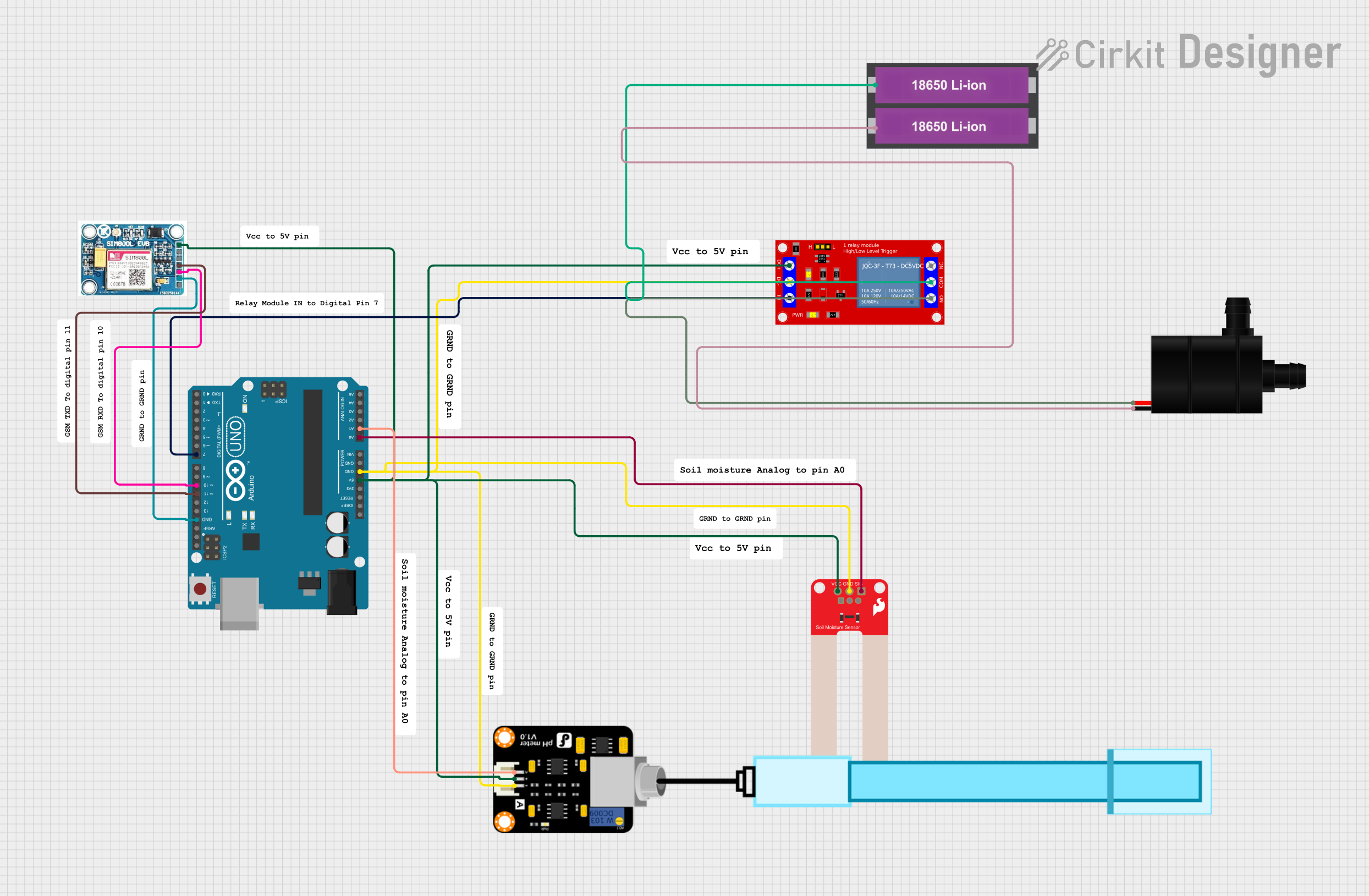
This circuit is an automated soil monitoring and irrigation system. It uses an Arduino UNO to read data from a soil moisture sensor and a pH meter, and controls a water pump via a relay module. The system can also communicate data through a SIM 800L GSM module.
 Open Project in Cirkit Designer
Open Project in Cirkit DesignerExplore Projects Built with Soil Moisture Module

Wi-Fi Enabled Soil Moisture Monitoring System with NodeMCU and Soil Moisture Sensor
This circuit is a soil moisture monitoring system that uses a soil moisture sensor connected to a Soil Moisture Module, which in turn interfaces with a NodeMCU V3 ESP8266 microcontroller. The system is powered by a 12V power supply regulated through a buck converter, and it reads soil moisture levels, converting them to a percentage and transmitting the data via the microcontroller.
 Open Project in Cirkit Designer
Open Project in Cirkit Designer
Arduino-Controlled Soil Moisture Sensing and Water Pump System
This circuit is designed to monitor soil moisture levels using a SparkFun Soil Moisture Sensor connected to a Soil Moisture Module, which interfaces with an Arduino Nano microcontroller. The Arduino reads the analog moisture level and can control a water pump via a relay module based on the moisture data. The system is powered by an 18650 Li-Ion battery, and the relay ensures that the pump is activated only when the soil moisture falls below a certain threshold, as determined by the Arduino's programmed logic.
 Open Project in Cirkit Designer
Open Project in Cirkit Designer
Arduino UNO Controlled Soil Moisture Monitoring and Water Pump System
This is a soil moisture monitoring system with automated water pump control. It uses an Arduino UNO to read moisture levels via a YL-83 Module LM393 and a YL-69 Sonda sensor, controlling a 5V mini water pump through a 5V relay based on the sensor's output. The system's status is displayed on an I2C LCD 16x2 Screen, and power is regulated by two buck converters from two 12V power supplies.
 Open Project in Cirkit Designer
Open Project in Cirkit Designer
Arduino-Based Smart Irrigation System with Soil Moisture and pH Sensors, GSM Connectivity, and Battery Power
This circuit is an automated soil monitoring and irrigation system. It uses an Arduino UNO to read data from a soil moisture sensor and a pH meter, and controls a water pump via a relay module. The system can also communicate data through a SIM 800L GSM module.
 Open Project in Cirkit Designer
Open Project in Cirkit DesignerTechnical Specifications
Key Technical Details
| Parameter | Value |
|---|---|
| Operating Voltage | 3.3V - 5V |
| Output Type | Analog and Digital |
| Analog Output | 0V (dry) to Vcc (wet) |
| Digital Output | High/Low (configurable) |
| Current Consumption | < 20mA |
| Operating Temperature | -40°C to 85°C |
| Dimensions | 60mm x 20mm x 5mm |
Pin Configuration and Descriptions
| Pin Name | Description |
|---|---|
| VCC | Power supply (3.3V - 5V) |
| GND | Ground |
| A0 | Analog output (voltage proportional to moisture) |
| D0 | Digital output (configurable threshold) |
Usage Instructions
How to Use the Component in a Circuit
- Power the Module: Connect the VCC pin to a 3.3V or 5V power supply and the GND pin to the ground of your circuit.
- Analog Output: Connect the A0 pin to an analog input pin on your microcontroller to read the moisture level as a voltage.
- Digital Output: Connect the D0 pin to a digital input pin on your microcontroller to read a high/low signal based on the moisture threshold set by the onboard potentiometer.
Important Considerations and Best Practices
- Calibration: Calibrate the sensor by adjusting the potentiometer to set the desired moisture threshold for the digital output.
- Placement: Insert the sensor probes into the soil at the desired depth to get accurate readings.
- Protection: Protect the sensor from prolonged exposure to water to prevent corrosion. Consider using a protective coating or housing.
- Power Supply: Ensure a stable power supply to avoid fluctuations in readings.
Example Code for Arduino UNO
// Soil Moisture Sensor Example Code for Arduino UNO
const int analogPin = A0; // Analog pin connected to A0 of the sensor
const int digitalPin = 7; // Digital pin connected to D0 of the sensor
int analogValue = 0; // Variable to store the analog value
int digitalValue = 0; // Variable to store the digital value
void setup() {
Serial.begin(9600); // Initialize serial communication at 9600 baud
pinMode(digitalPin, INPUT); // Set digital pin as input
}
void loop() {
analogValue = analogRead(analogPin); // Read the analog value from the sensor
digitalValue = digitalRead(digitalPin); // Read the digital value from the sensor
// Print the values to the Serial Monitor
Serial.print("Analog Value: ");
Serial.print(analogValue);
Serial.print(" | Digital Value: ");
Serial.println(digitalValue);
delay(1000); // Wait for 1 second before the next reading
}
Troubleshooting and FAQs
Common Issues Users Might Face
- Inconsistent Readings: Fluctuations in sensor readings can be caused by unstable power supply or poor connections.
- Corrosion: Prolonged exposure to moisture can corrode the sensor probes, leading to inaccurate readings.
- No Output: If there is no output, check the connections and ensure the sensor is properly powered.
Solutions and Tips for Troubleshooting
- Check Connections: Ensure all connections are secure and correct.
- Stable Power Supply: Use a stable power supply to avoid fluctuations in readings.
- Sensor Maintenance: Regularly check and clean the sensor probes to prevent corrosion.
- Calibration: Recalibrate the sensor if the readings seem off.
By following this documentation, users can effectively utilize the Soil Moisture Module in their projects, ensuring accurate and reliable soil moisture monitoring.